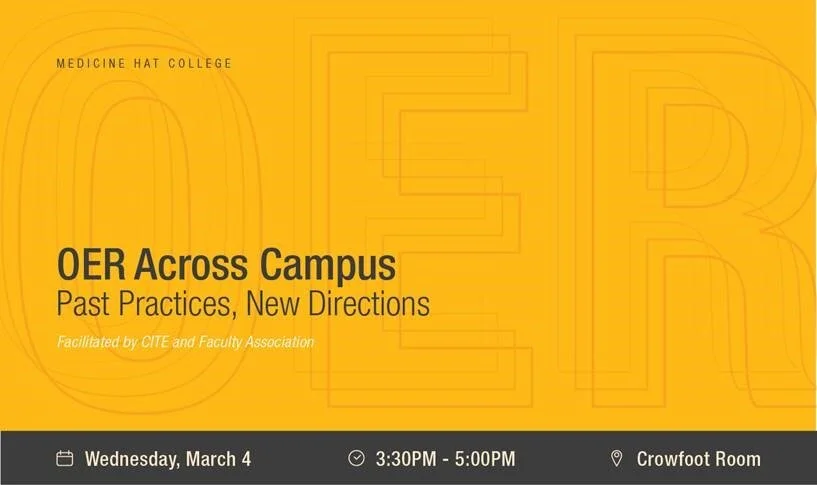This year, to celebrate Open Education Week, MHC’s Faculty Association, the Centre for Innovation and Teaching Excellence, the VPA office and MHC’s bookstore are hosting a panel to talk about Open Educational Resources and the Canadian Roundtable on Academic Materials.
In December 2019, representatives from across the college (including faculty) assembled to talk about a future textbook strategy. This was the second meeting to discuss how MHC can lower the costs for the students and look at alternative methods of providing course materials. This conversation was a microcosm of an ongoing national conversation now taking place as the Canadian Roundtable on Academic Materials (CRAM).
Faculty members are (and always will be) in the best position to affect the prices of textbooks, but there are other players involved, and the history of CRAM illuminates this. CRAM was founded in 2007 at the University of Alberta as a partnership between the Bookstore and Student’s Union. These two entities often see the issue of textbook costs from different perspectives. Bookstores may feel the pressure to produce revenue, whereas the Student’s Union will see textbook costs in terms of student debt and student stress.
At the college level, especially, it appears that whatever money students save on textbooks, they use to invest in their education.
The Canadian Roundtable on Academic Materials began a national dialogue centered on a collaborative effort to primarily address the high cost of course materials. Campus Stores Canada re-initiated this conversation in October 2018 at Ottawa’s Lord Elgin Hotel. The key parties involved in the ongoing conversations taking place between Fall 2019 and Spring 2021 included faculty (Canadian Association of University Teachers), librarians (Canadian Association of Research Libraries), educational developers (Society of Teaching and Learning in Higher Education), administrators (Universities Canada), and Campus Stores Canada (the association representing collegiate bookstores).
In CRAM’s 2018 report capturing these conversations, they note a relationship between course material affordability and student mental health. Student well-being has the potential to be the bridge as this is a shared value for all stakeholders. Libraries and bookstores also seemingly hold competing mandates, but collaboration between these entities can enhance the student experience. Faculty may not be aware of the full range of choices available to them via OER or the library’s collections. Students will buy textbooks that have perceived value, and they prefer print, but will purchase digital if it’s more affordable. Most importantly, it is important for all stakeholders to work together. That’s why I am excited about this event next week on March 4.
CRAM’s 9 key principles represent this spirit of collaboration and conversation. They strive to achieve the goal “to ensure the existence of an ongoing medium through which the key parties can identify and implement ways of addressing the underlying issues.” Some of the nine principles include:
· Academic materials must be a high quality and offer reasonable value to students.
· Academic Community Members are the ultimate decision makers for selecting academic materials.
· Academic Community Members should consider the cost for students when selecting course materials, and should explore and utilize the most cost-effective forms of delivery.
· The academic materials delivery processes at each participating school should incorporate joint Bookstore, Student, Academic Community Members and Library committees that foster communication, promote enhanced relationships, and facilitate the sharing of ideas and concerns.
· Establish monitoring and feedback mechanisms in order to measure and enhance the quality, affordability, and accessibility of academic materials.
· Advance the cost-effectiveness and affordability of academic materials through the development of advocacy strategies and tools that can be utilized at the campus level to promote enhanced awareness of the problems and the solutions.
It’s an important time to have this conversation. We are not exactly sure what Performance-Based Funding will look like in Alberta, but Open Educational Resources appear to be a metric not tied to funding. More importantly, most faculty (where choice exists) think about what is in the best interests of students when selecting their learning materials, and it will be good to get a sense of where supports can be effective.
